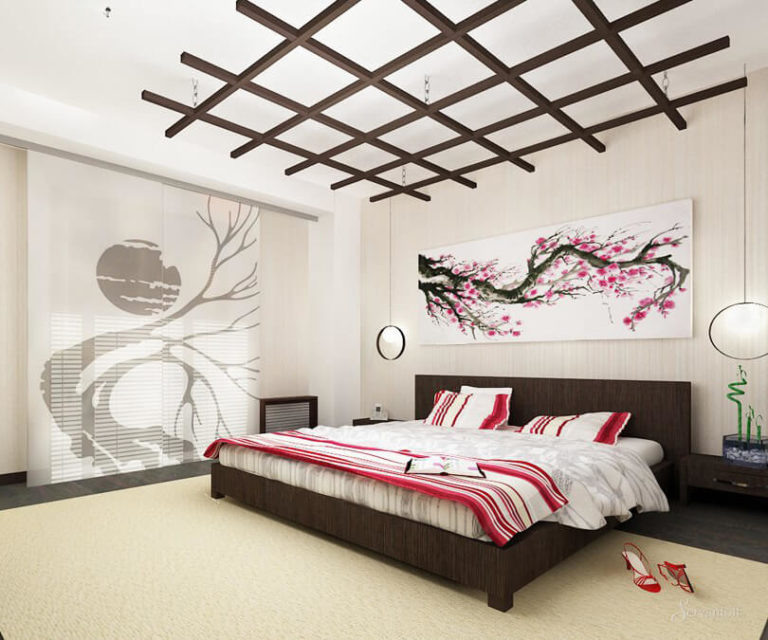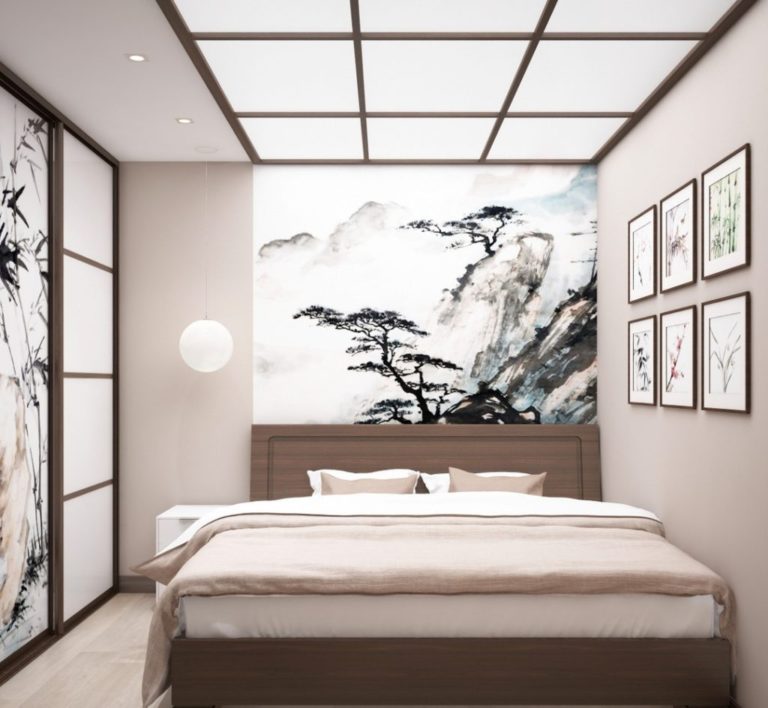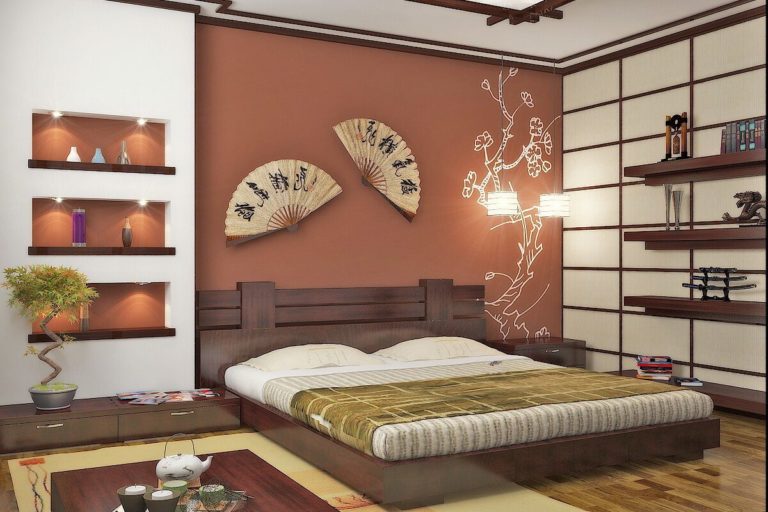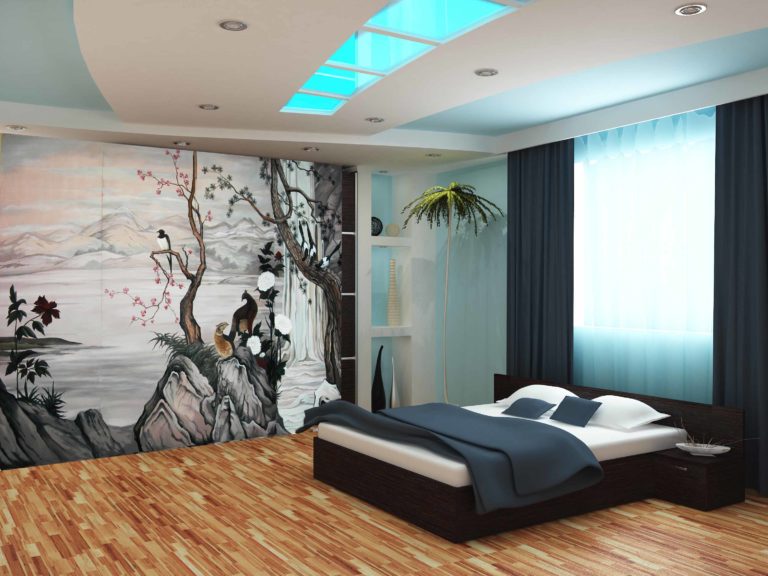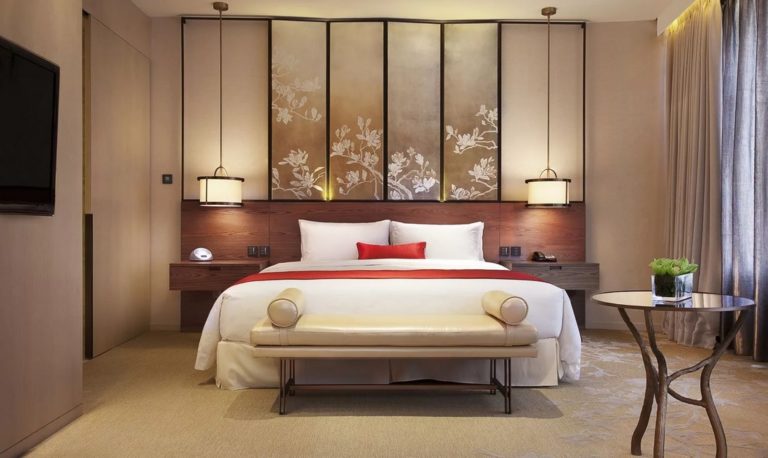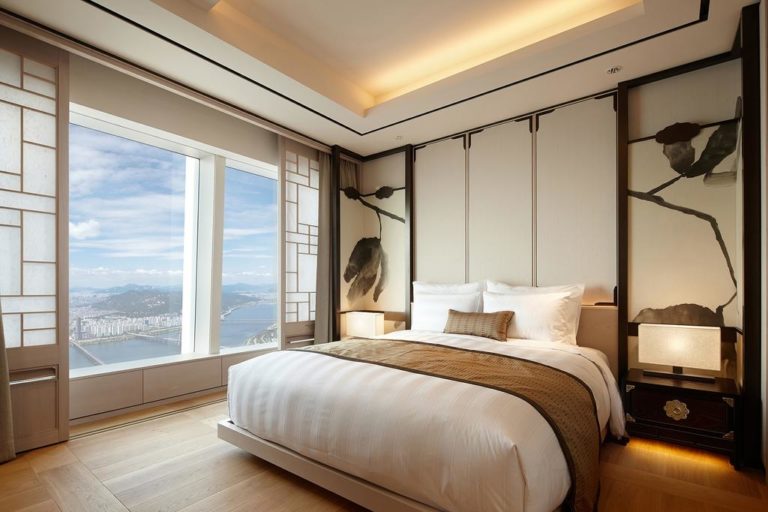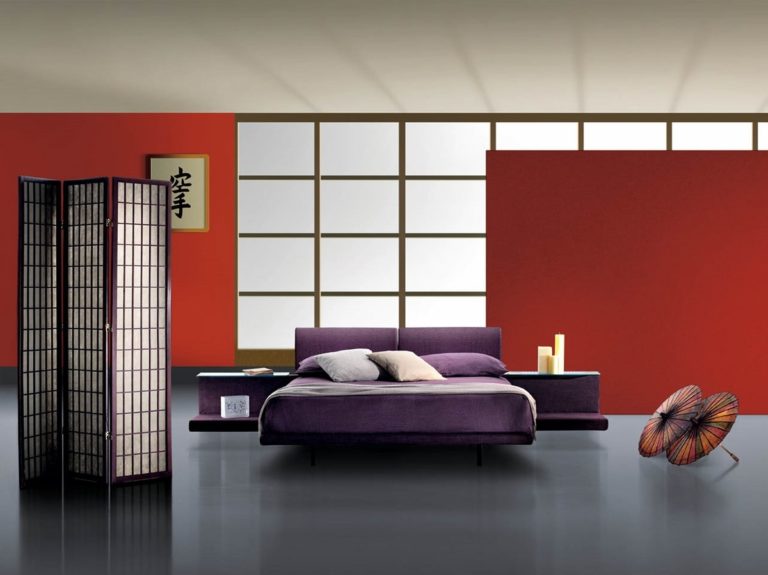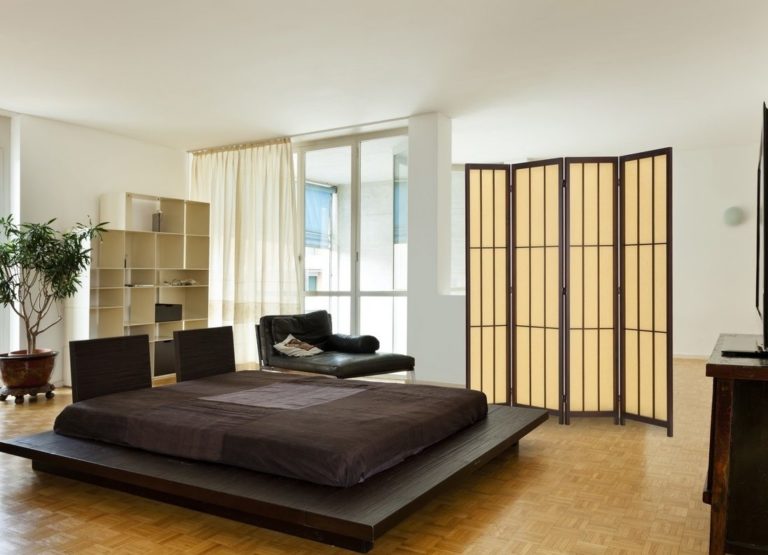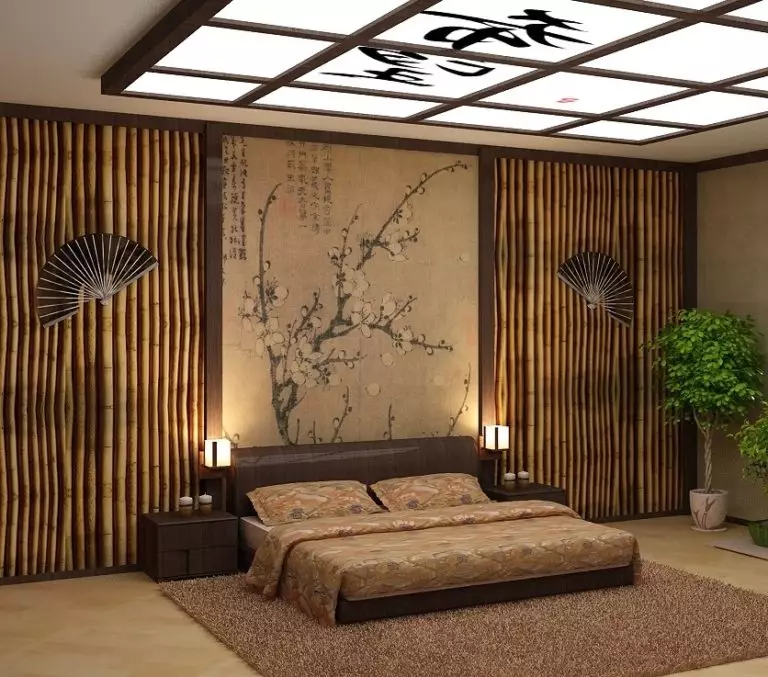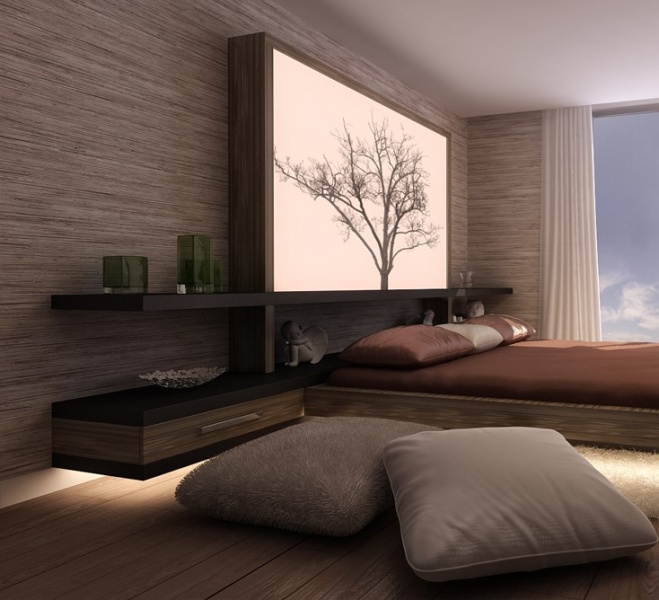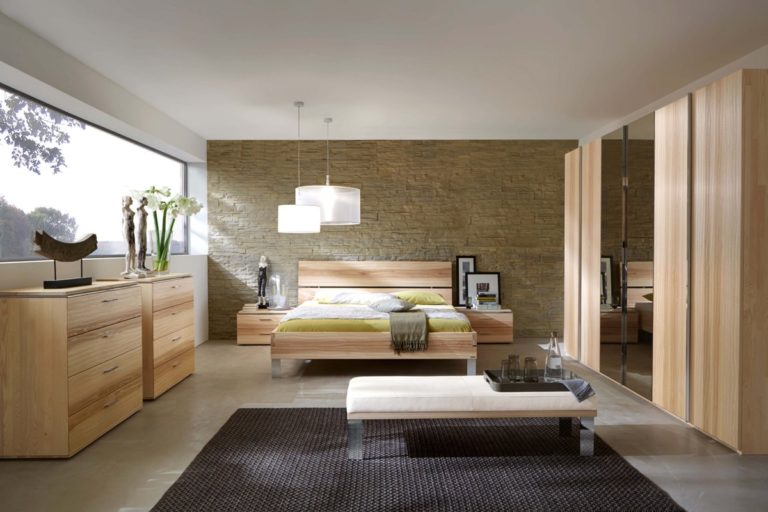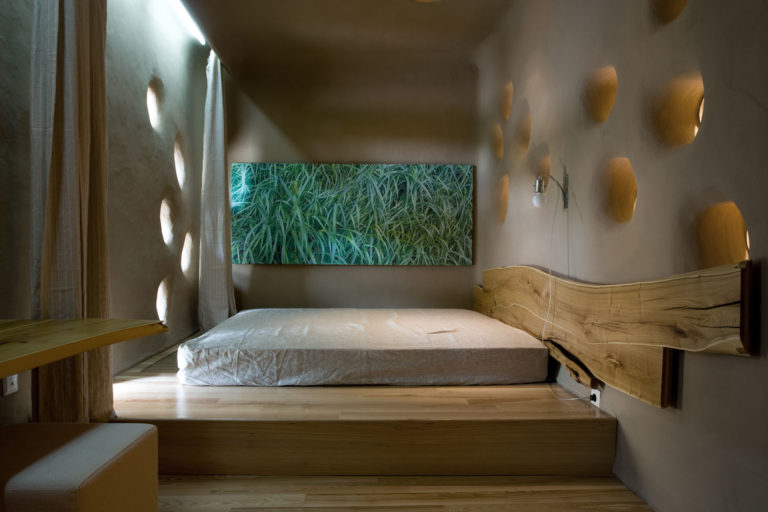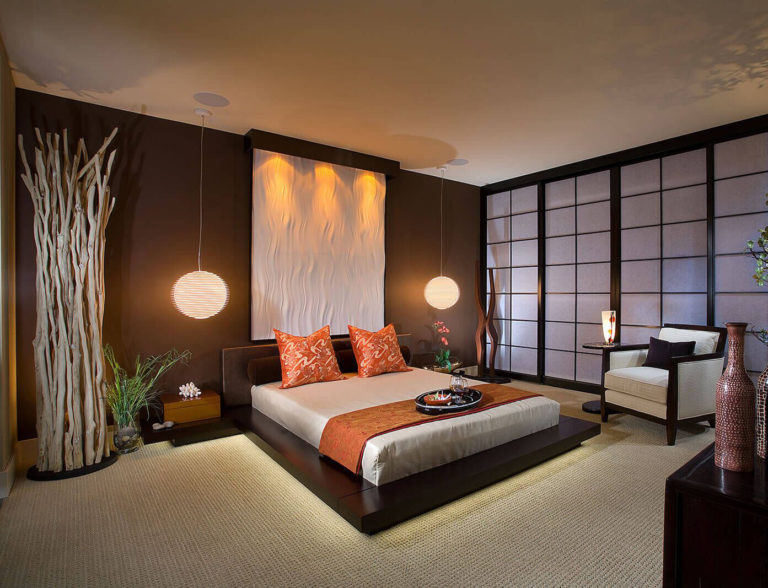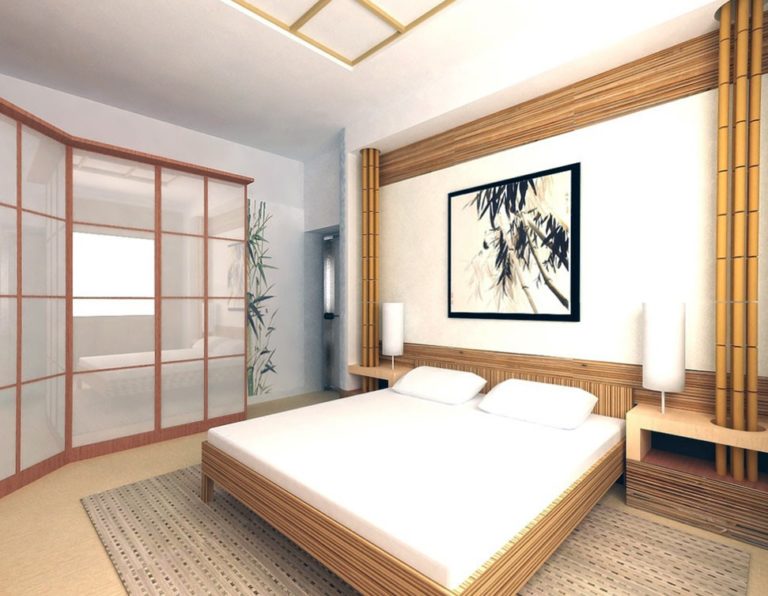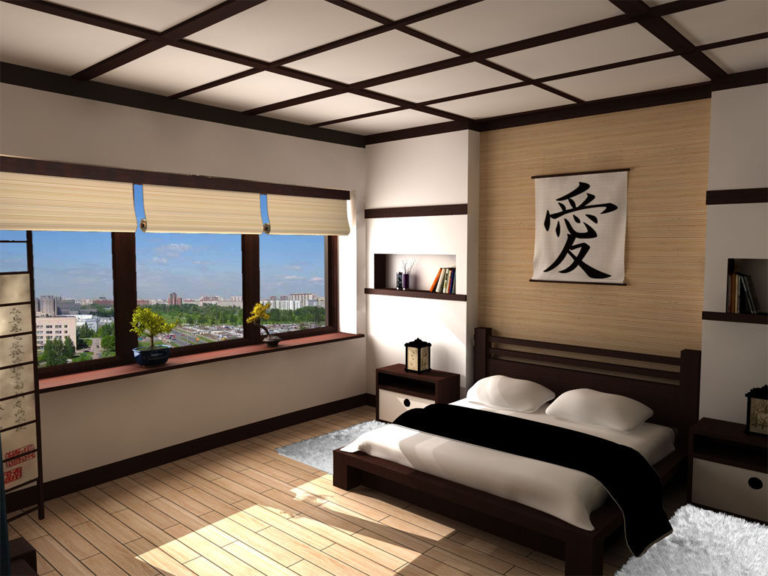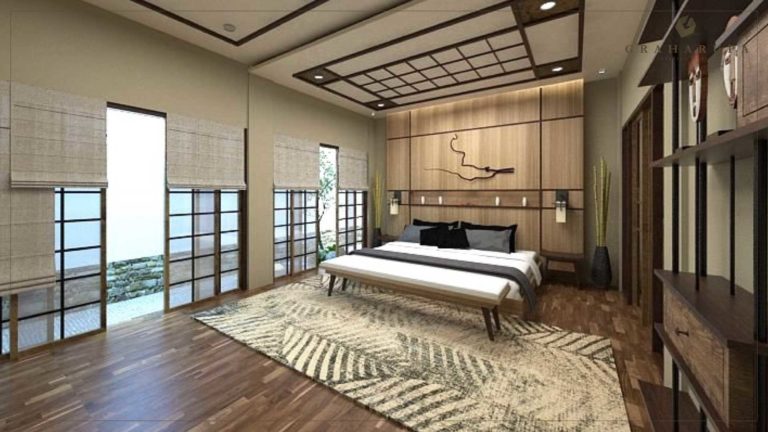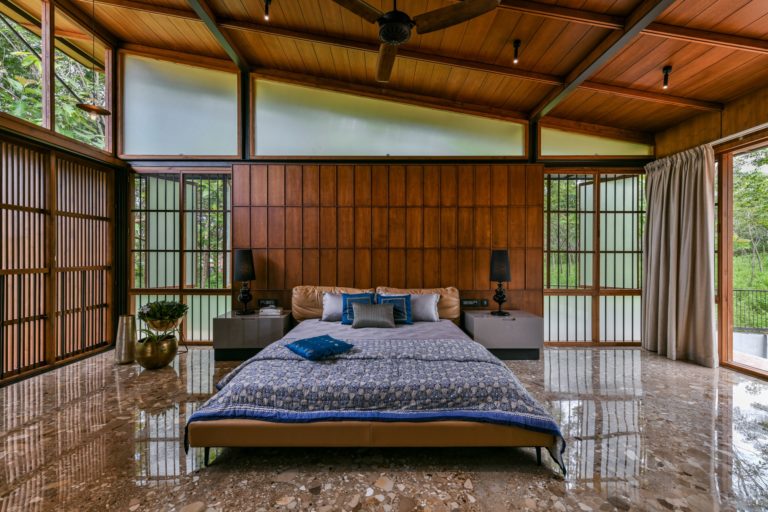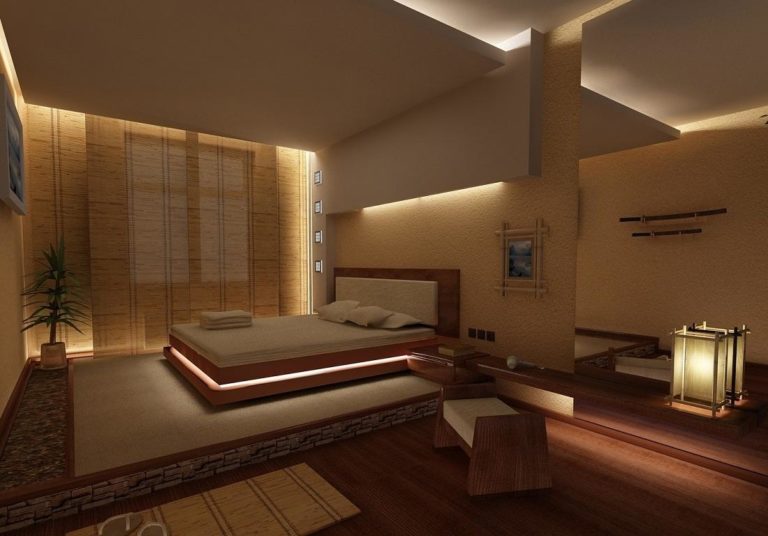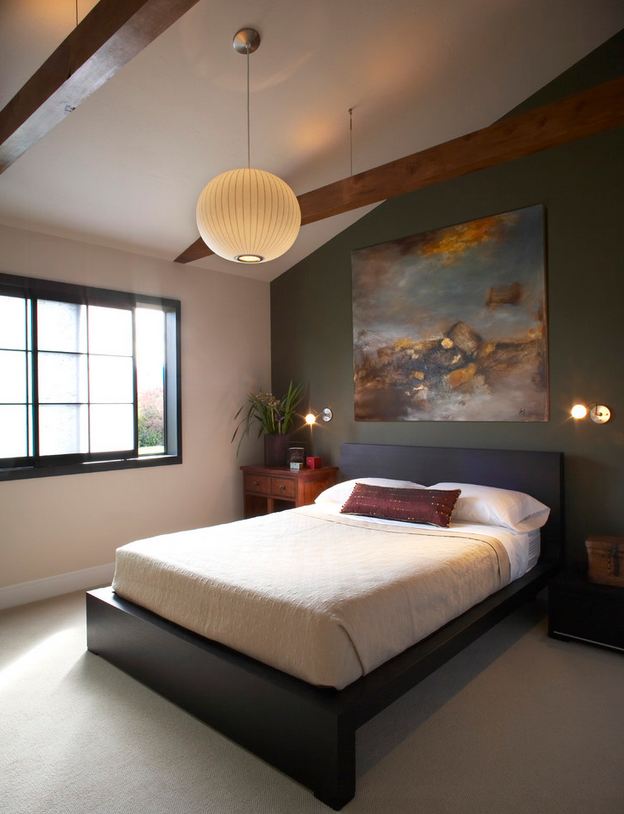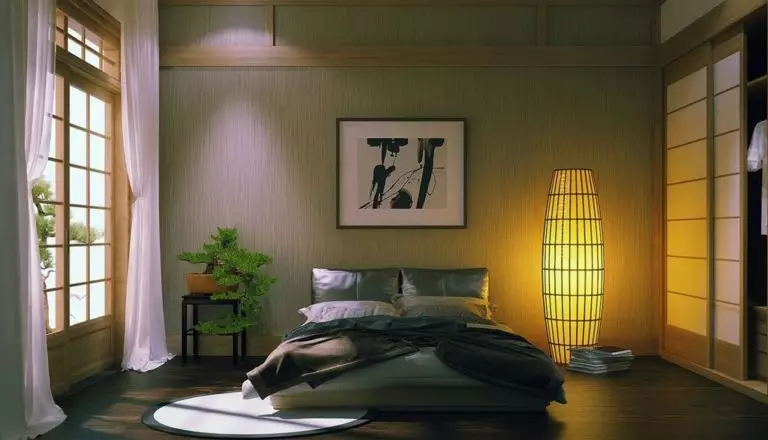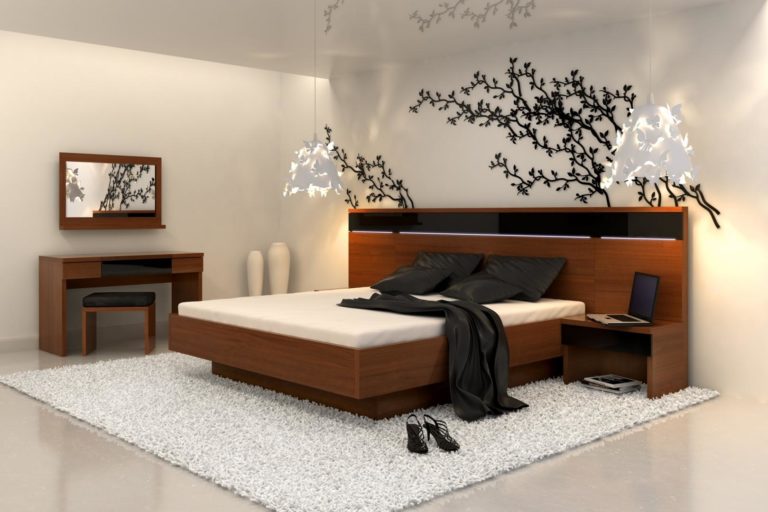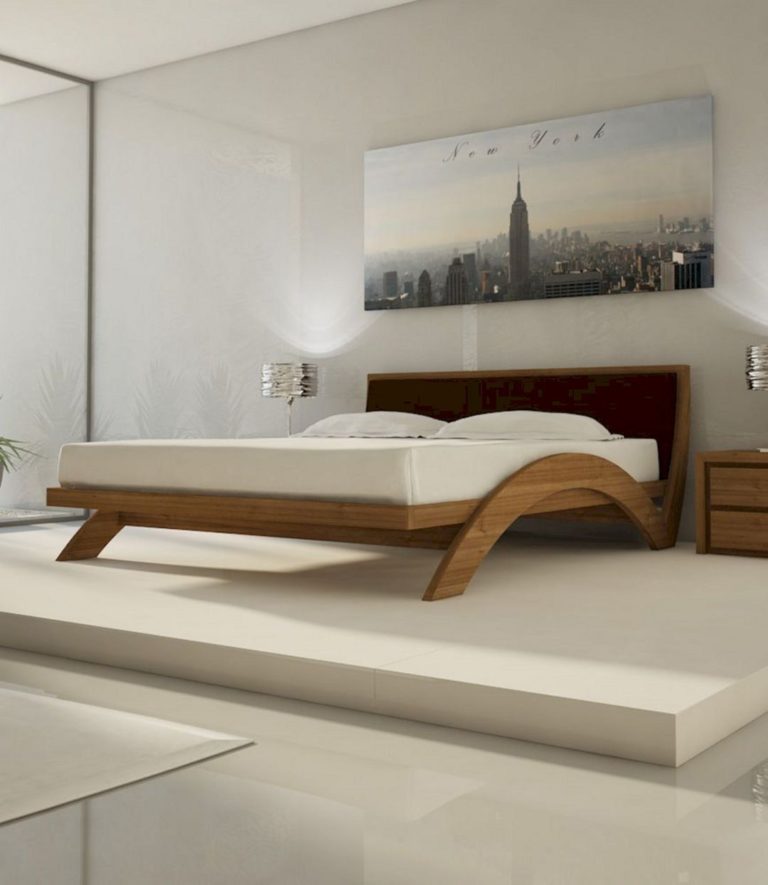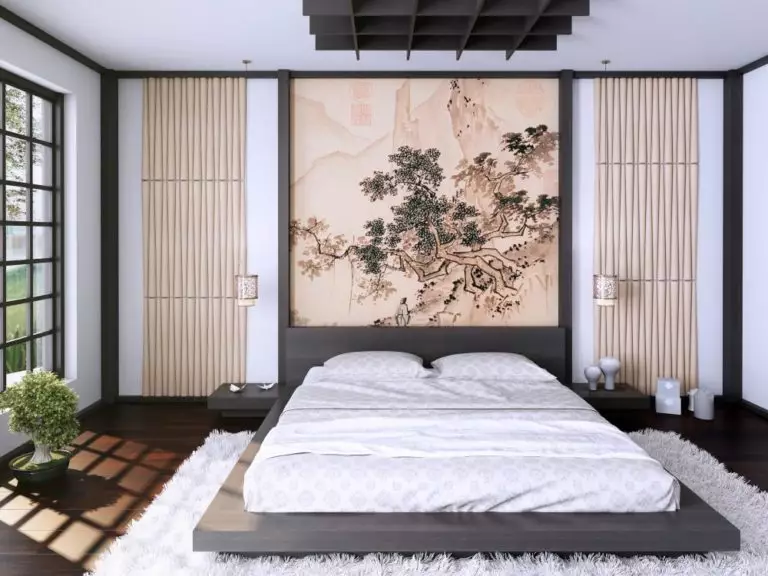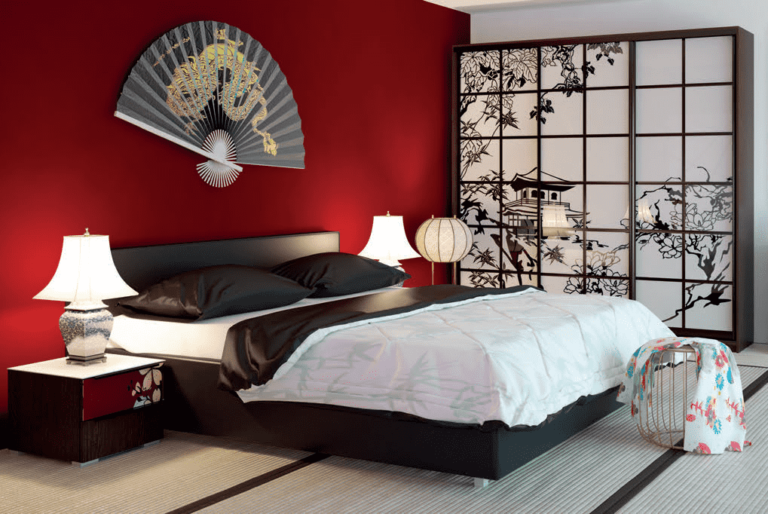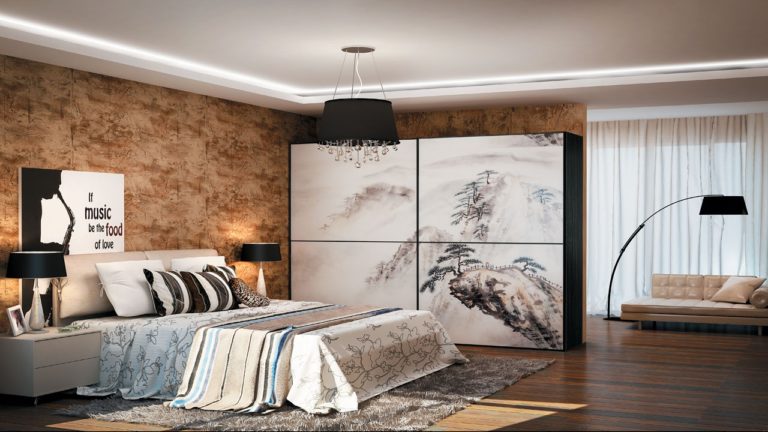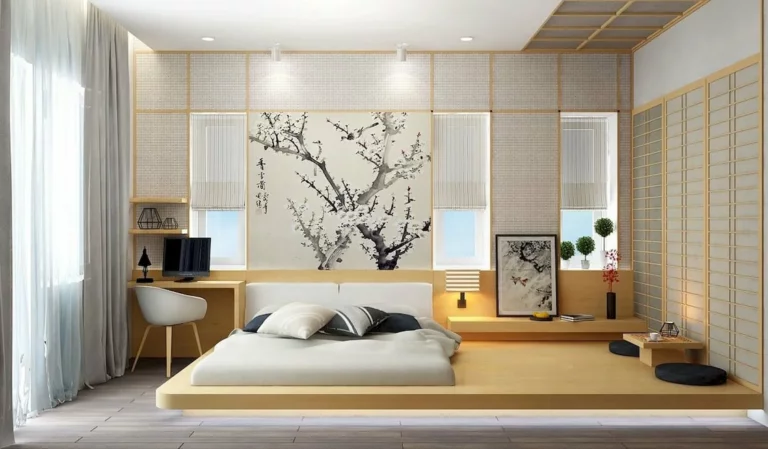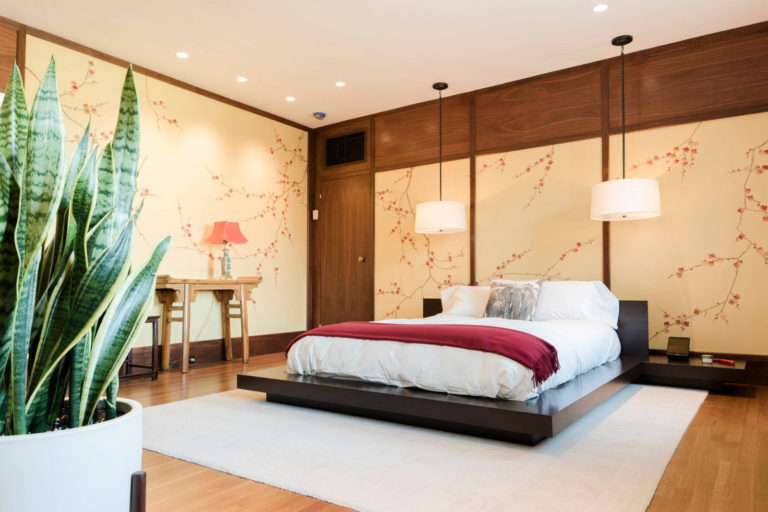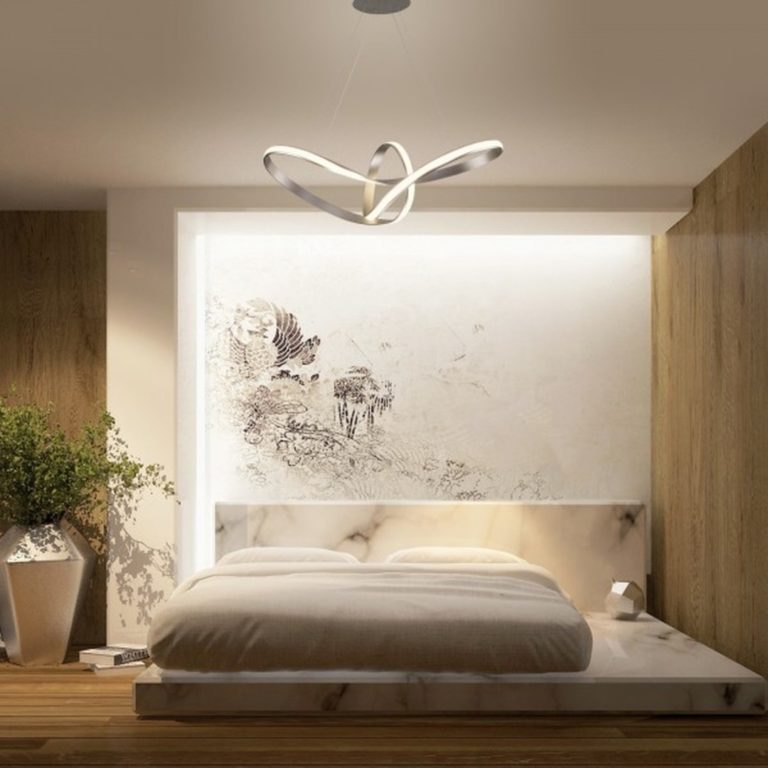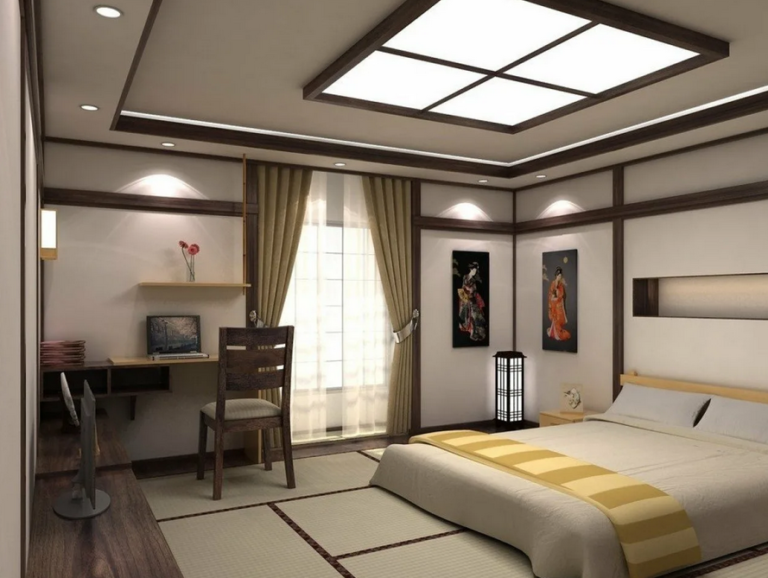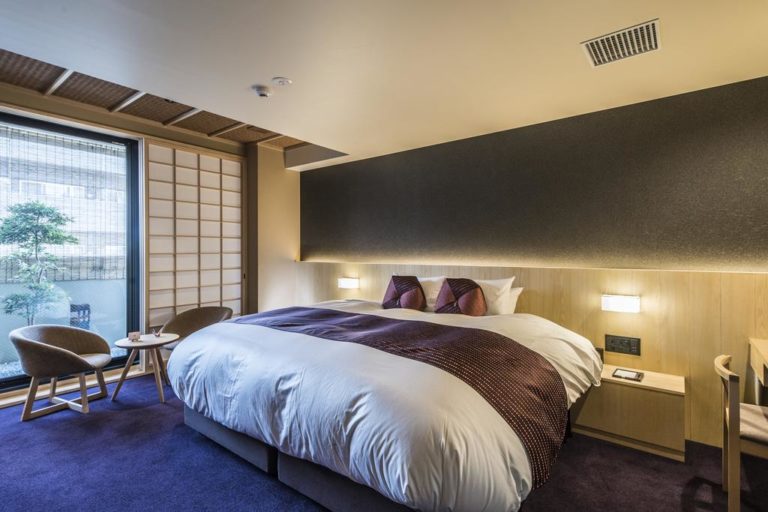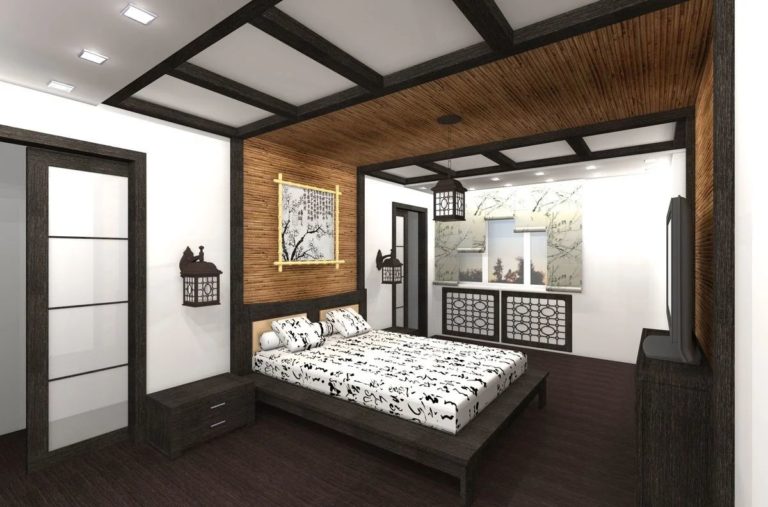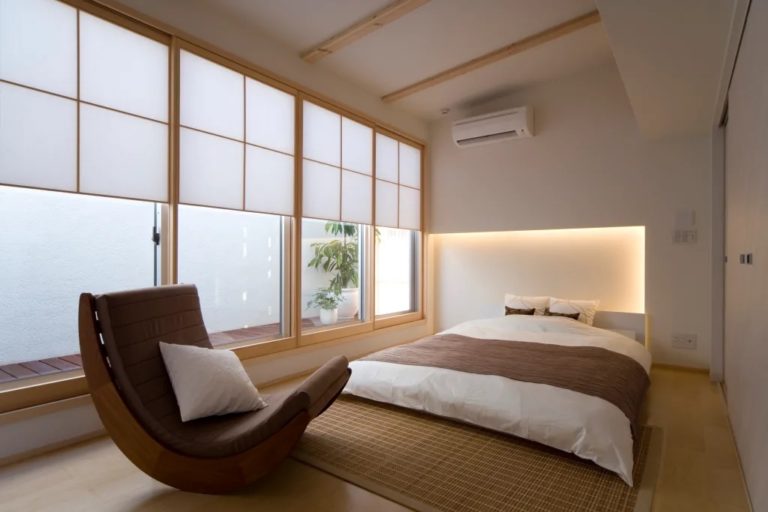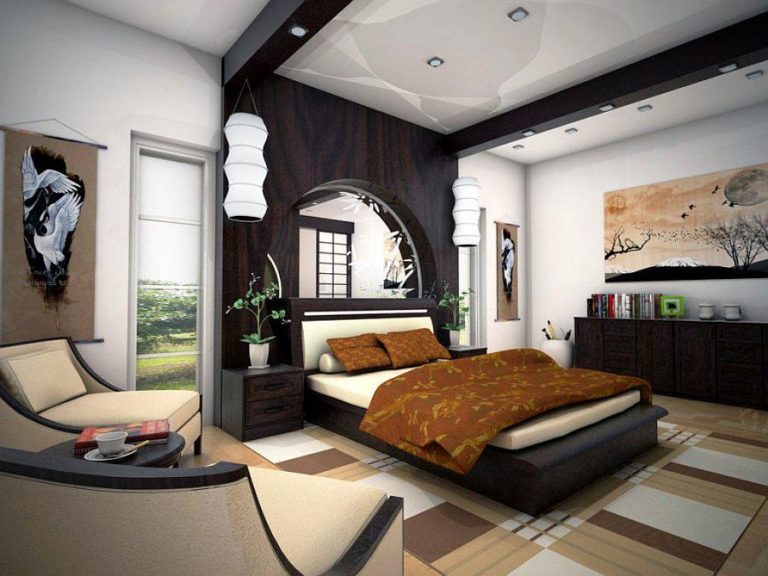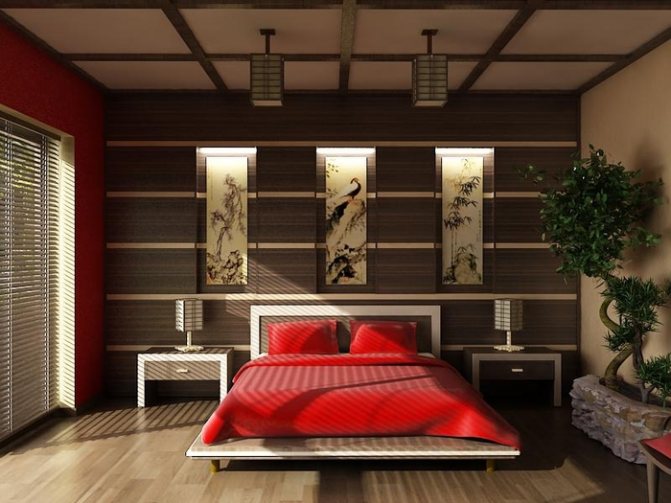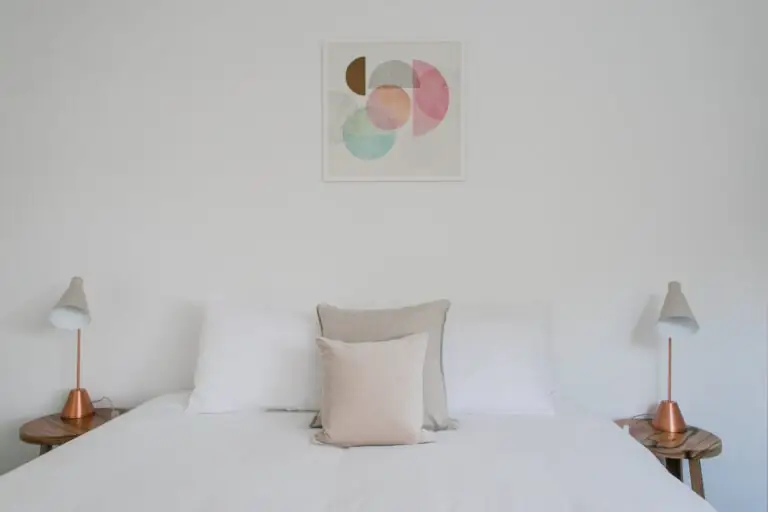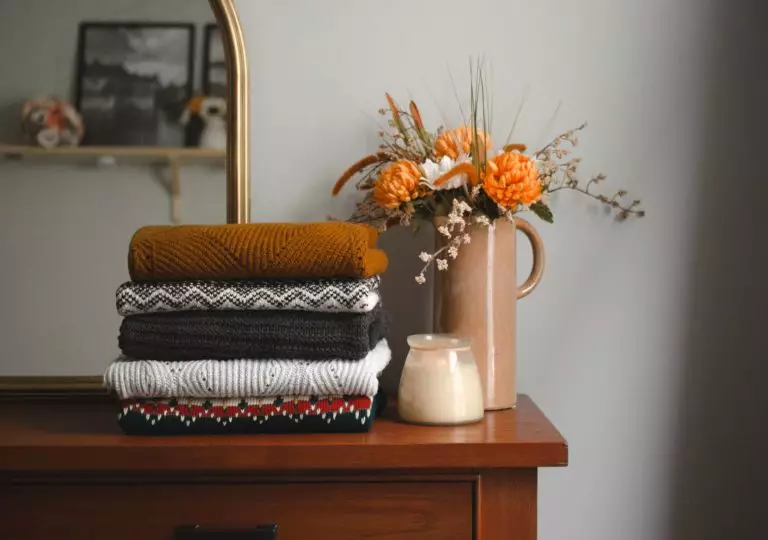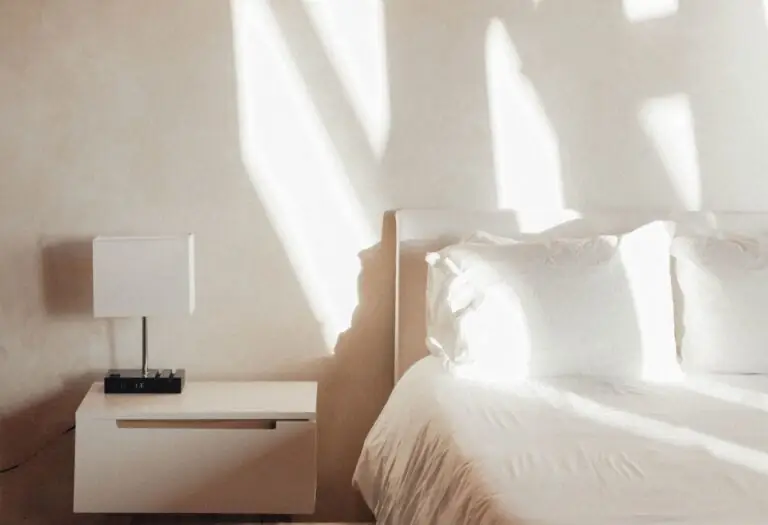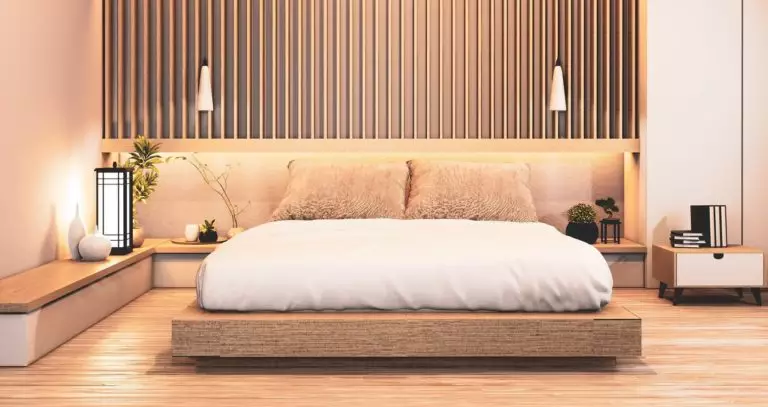
Calmness, the harmony of soul and body, absence of unnecessary emotional outbursts and depressing discomfort – this is what the ideal interior should be in the opinion of the inhabitants of Japan. The basic principles of home improvement, characteristic of this oriental culture with a rich history and unique philosophy, do not leave indifferent people worldwide. Thanks to the impressive number of followers, the Japanese style has taken its rightful place in the design encyclopedia.
The direction, whose homeland was the Land of the Rising Sun, has its canons for designing each room in the house. In this case, the most important of them is the bedroom, which is endowed with an almost sacred meaning. In this room, a person should relax mentally and physically, get rid of negative thoughts, abandon everyday worries, and recharge with energy. All this becomes possible only in a harmonious and carefully thought-out environment, where every detail is in its place and has a particular meaning. If such ideas are close to you, then a Japanese-style bedroom will undoubtedly become your place of power – all that remains is to study in more detail the features of its decoration and arrangement.
Japanese bedroom: key aspects
The cultural environment in which a person is born or has lived for a long time can severely impact his ideas about the aesthetics of living space. For most Europeans, a bedroom is a cozy and bright room with many pleasant textures and lovely little things. Representatives of the Middle East often prefer dark, deep colors, luxurious patterns, gold embroidery, and an abundance of textiles and decor. Well, the Japanese see perfection in brevity, which sometimes borders on asceticism.
If you decide to decorate the bedroom in this way, then the following rules for creating such an interior will be valuable information for you:
Having studied all these principles, you should not think that Japanese-style bedrooms are practically indistinguishable. There are specific ways to show the owners’ individuality in the room’s interior; however, they are so delicate and discreet that it is not immediately possible to recognize them – the uniqueness seems to be formed at the mental level.
Choosing colors
Color sets the mood – and therefore, it is imperative to determine not only the color spectrum but also the distribution of shades.
First of all, you need to choose the background color: the atmosphere in the bedroom as a whole depends on the tone in which you decorate the walls. The fact is that vertical surfaces in Japanese interiors are not covered by either furniture or a large amount of wall decor. Therefore the background becomes responsible for both rhythm and color perception.
Most often, matte and smoky white, beige, cream, light gray, and black dominate in the bedroom palette. For all their neutrality, it is these colors that provide such essential visual relaxation. As for furniture and a small number of accessories, they prefer a natural woody and earthy palette. Chocolate, coffee, beige and white shades are also acceptable.
However, this does not mean that the room can only be decorated in such neutral and restrained colors. If such an interior seems too seasoned to you, it is quite possible to add more juicy notes. So, Japanese minimalism is quite supportive of dark red, delicate coral, and terracotta. Pale olive and pistachio can add freshness. Indoor plants also enliven the decoration of the bedroom – but more on them later.
Bedroom finishing
As mentioned earlier, finishing comes to the fore in such a laconic interior. That is why it is especially important to comply with all the rules for selecting texture, color, and design decisions based on the traditional decoration of houses in Japan.
Walls
The absence of capital walls characterizes Japanese-style interiors as such. Traditionally, the bedroom space is limited by shoji – fixed or sliding partitions made of washi (translucent or transparent paper), glass, or light plastic, enclosed in a wooden frame. Portable screens made of wood and all the same rice paper are usually used for zoning and decoration – and in an ordinary city apartment or a country house, such partitions will be enough to convey the oriental flavor.
As for the design of the walls themselves, the most popular solution is painting in the tones mentioned above. If desired, you can apply a stencil drawing on them in the appropriate style or use decorators’ services. Other attractive finishes are also possible:
Floor
Japanese minimalism categorically denies complex and overly variegated flooring, preferring natural surfaces. The flooring’s essential materials are wood and stone, which in current conditions can be easily replaced with boards, matte laminate, porcelain stoneware, or tiles with the appropriate texture. Gloss and ornaments are categorically unacceptable here – natural monochrome remains an absolute priority.
To create a cozy atmosphere in the bedroom, you can also use textile floor coverings with imitation mats, as well as rugs in straw, jute, sisal, or wool.
Ceiling
The main requirement for ceilings in a bedroom decorated in the spirit of Japanese minimalism is exact geometry. Complex multi-level stretched and false structures are unacceptable – only straight lines and right angles. Designers offer to choose from several authentic finishes:
Lighting
A room for rest and sleep implies a positive atmosphere, which cannot be created without sufficient lighting. Direct sunlight and bright cold artificial light are highly undesirable – however, a subdued and soft flowing one will provide all conditions for harmony and relaxation.
Japanese-style bedroom lighting scenarios can include:
When choosing lamps for a room, it is worth making sure that they form a single ensemble – a sense of integrity is crucial for this design direction.
Furniture
The most critical moment in designing this room’s interior, of course, is the sleeping place – and therefore, you need to think about it first. The Japanese pay a lot of attention to the sleeping area’s design since the relaxation quality depends on this.
The bedroom’s traditional option is a futon, a thick cotton-padded mattress placed directly on the floor, or a small wooden podium. It is related to a belief that it is the earth that gives the necessary vitality, and you can scoop them, being as close to it as possible, as well as with the need to install the most straightforward furniture in earthquake zones.
If you are not ready to sleep on the floor yet, you should choose an appropriate bed – an exact square or rectangular shape and as low as possible. Authentic Japanese furniture provides for the absence of a headboard. However, if you wish, you can choose a model with a low, laconic headboard.
The following pieces of furniture will also help create a cozy atmosphere in the bedroom:
The shade and type of wood from which the furniture is made are no less important – preference is usually given to black ash, dark walnut, mahogany, and birch.
Decor
In a bedroom for which a Japanese style has been chosen, authenticity is of the utmost importance, with carefully selected décor. It is unnecessary to use all the souvenirs and accessories that you could find at once, but a few gizmos will allow you to set the desired flavor. Among them:
Textiles deserve special attention in decorating the bedroom. There is not too much fabric as a rule – these are light curtains and thin bedspreads made of cotton, alpaca, and unbleached linen. Prints are also allowed – discreet floral or colorful with the image of pagodas, cherry blossoms, and mythical birds.
Another vital point is green plants, which add naturalness and freshness to the interior. At the same time, it is not necessary to strictly follow the stereotype and choose bonsai exclusively. Plants with tall, strong stems and long, narrow leaves will fit perfectly into the bedroom decor. However, you should discard the options with rounded leaves and vines since these are believed to disturb order and harmony.
Without sparing time for finishing and selecting furnishings, you can enjoy home warmth, peace, and a feeling of complete harmony with yourself and nature.
Japanese bedroom design: Conclusions + Photo gallery
Rationality, minimalism, and naturalness are a kind of three pillars that you need to rely on when designing a bedroom in Japanese style.
